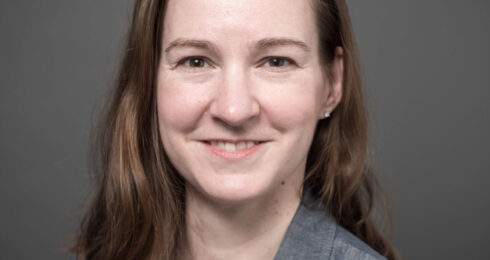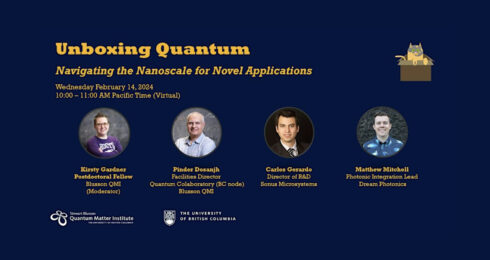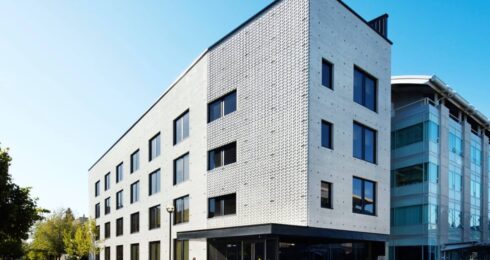A volcano erupted in Tonga in January and the atmospheric disturbance was detected by pressure sensors in the cleanroom at the Stewart Blusson Quantum Matter Institute (Blusson QMI), nearly 10,000 kilometers away.
The cleanroom is a space within the Advanced Nanofabrication Facility (ANF) on the fourth floor of the AMPEL building at Blusson QMI. It is used by researchers at UBC, other universities, and our partners in industry to develop nanotechnology devices for applications that range from DNA sequencing to quantum electronics. In order to support this highly sensitive research, the facility needs to be carefully monitored by environmental sensors that measure temperature, humidity, and pressure.
“Changes in humidity and temperature inside the cleanroom affect nanofabrication processes,” said Kostis Michelakis, Director of the ANF. “For example, some of our processes involve chemical reactions, and we have calibrated them to work under certain such conditions with a certain rate or outcome. If temperature and/or humidity changes, those processes will not perform predictably.”
In order to ensure that lab conditions are optimal inside the cleanroom, the ANF team relies on custom-built sensors and monitoring programs developed by Ovidiu Toader, Systems Analyst at Blusson QMI. Using inexpensive single board computers such as Raspberry Pi and widely available sensors, Toader has developed agile systems that provide valuable real-time information about the conditions inside the cleanroom so that Michelakis and colleagues can adjust the environmental controls in the space.
“Commercial sensors may not always give you what you want, and so we’re very much into the flexible, small devices that we can tailor to our specific needs,” said Toader. “Keeping the humidity under control throughout the year – it’s more humid in the building in the summer, for example – it’s a big job, and we need to be very aware as conditions change.”
First simulation of the atmospheric pressure disturbances generated by the #Tonga volcano explosion compared with observations from different locations. Not bad results for a first guess.@IMEDEA_UIB_CSIC @UIBuniversitat pic.twitter.com/d26wmGiDJY
— Angel Amores (@an_amores) January 21, 2022
While temperature and humidity are important factors, a third sensor monitors the pressure inside the room.
“Clean, dust-free air is supplied inside the cleanroom. In order to keep prevent outside air from entering the cleanroom, which can add dust and interfere with temperature and humidity, we are just keeping the air-pressure a bit higher inside the cleanroom, compared to what it is outside,” said Michelakis. “With the pressure sensor, we check that this condition is indeed met.”
The pressure sensor is quite sensitive, to the point where it can detect atmospheric pressure changes within the building, including the slightly different altitudes between floors.
“The fact that we caught the Tonga event obviously means that it sent a pressure wave of that magnitude around the globe,” said Michelakis. “It may not be something new for volcano experts, but it is certainly exciting to be able to see it in our setting.”
Read more:
- SBQMI Advanced Nanofabrication Facility
- ‘It’s Super Spectacular.’ See How the Tonga Volcano Unleashed a Once-in-a-Century Shockwave. (New York Times, April 14, 2022)
- Numerical Simulation of Atmospheric Lamb Waves Generated by the 2022 Hunga-Tonga Volcanic Eruption (Geophysical Review Letters, March 22, 2022)
- Team finds that recent Tonga volcano eruption caused significant space plasma disturbances on a global scale (Phys.org, March 24, 2022)


